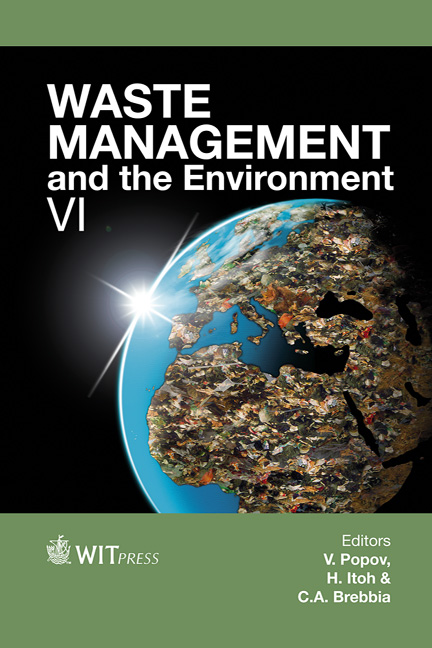Study Of The Antioxidant Potential Of Forestry Biomass Waste
Price
Free (open access)
Transaction
Volume
163
Pages
12
Page Range
323 - 334
Published
2012
Size
437 kb
Paper DOI
10.2495/WM120291
Copyright
WIT Press
Author(s)
A. Fernández-Agulló, C. Gómez-Castro, L. Soto, M. S. Freire & J. González-Álvarez
Abstract
In the present study, the chemical composition of hazelnut husks, mimosa wood and waste forestry biomass was determined and their potential as sources of antioxidant compounds was evaluated. Extractions with water, ethanol, methanol, 50% ethanol and 50% methanol at 50ºC for 90 min were carried out to analyze the effect of the solvent on extraction yield and on the extracts’ total phenol content and antioxidant properties (FRAP, DPPH and ABTS assays). Mimosa wood extracts showed the highest total phenol content (27.86 g GAE/100 g extract) and FRAP (1889 nmol AAE/100 g extract) and the lowest EC50 ABTS (0.556 mg/mL) value, while waste forestry biomass showed the lowest EC50 DPPH (0.076 mg/mL) value. The highest extraction yields were obtained for hazelnut husks and the lowest for waste forestry biomass. The solvent that led to the best extract properties depended on the material, being 50% ethanol for hazelnut husks, ethanol for mimosa wood and 50% methanol for waste forestry biomass. The extracts obtained under the best conditions selected were analyzed by RP-HPLC-ESI-TOF to identify the phenolics responsible for the antioxidant activity. GPC analysis revealed the predominance of compounds of low and medium molecular weight. Keywords: hazelnut husks, mimosa wood, waste forestry biomass, phenolic compounds, antioxidant activity, GPC, RP-HPLC-ESI-TOF. 1 Introduction Antioxidants have been widely used in the food industry to avoid the oxidative deterioration of fats and oils that affect flavour, nutritional quality and safety of
Keywords
hazelnut husks, mimosa wood, waste forestry biomass, phenolic compounds, antioxidant activity, GPC, RP-HPLC-ESI-TOF.





